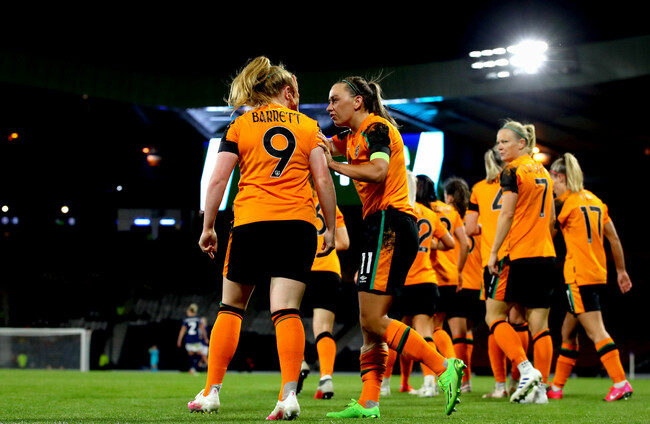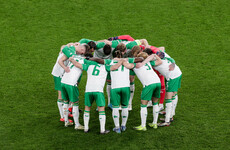1. Thirty years ago Roy Keane was either on the path to greatness or the road to disaster, depending on what British red-top newspaper you picked up on any particular day. “The hottest property in British soccer” as described by the Daily Mirror, was also the subject of a succession of lurid headlines ranging from his expulsion from nightclubs to unflattering details about his domestic arrangements in and around Nottingham, where Keane was clearly being closely watched from behind the net curtains. All wrapped up in the type of stereotypes which are now frowned upon in polite society.
Roy Keane: trials by tabloid (revisited), by Paul Rowan for The Times.
2. Frank is used to hard work — coaching Denmark under-17s, he would be up at 5.30am to go through match videos and make clips to show his players because he had no support staff — but, with this intensity, is it any wonder that just occasionally it bubbles over?
He was booked during Friday night’s victory over Brighton & Hove Albion after a minor altercation on the sidelines. “My wife is never proud of me when that happens and definitely not my youngest daughter. She texted her mum, ‘Dad is so embarrassing!’ So that’s not good,” he says, laughing. “But sometimes you just get sucked in…”
He explains that a big part of the job is the discipline to know how to focus on what matters which is why he talks once a week with a leadership mentor; a senior executive from Denmark who trains business high-fliers who is a wise old voice he has known for years.
“We speak about a lot of things, like how to keep your energy,” Frank says. “We have a phrase ‘constructive cynicism’. It is about making choices, what is good for me to make my day better, to be more efficient to make me a better leader. Do I need to be in this meeting? Do I need to take on that responsibility?”
The Times’ Matt Dickinson meets Brentford manager Thomas Frank.
3. Three years ago, Aramco, the oil giant predominantly owned by the Saudi royal family, underwent a subtle rebrand. And subtle is the operative word here: the company’s distinctive logo, a white star on a blue and green background, remained in place. But somehow the blue was rendered just a little bluer, the green just a little greener, the typeface softened into grey lowercase, the word “Saudi” and the Arabic script above it quietly removed.
This was the logo upon which Sam Curran stood as he prepared to bowl for England against Pakistan in their final Twenty20 World Cup warm-up on Monday, a little heap of sawdust at his feet. At the boundary’s edge, a band of Aramco billboards – blue as blue as the sky, green as green as life – flickered into the Brisbane night. Curran examined the ball in his hands, launched into his hop-skip approach and fixed his gaze on a set of Aramco-branded stumps about 40 yards away.
‘Aramco cricket deal again proves sport will ignore reality for revenue,’ writes Jonathan Liew for The Telegraph.
4. Dotted around that part of Hampden’s South Stand, it wasn’t hard to pick out all the other families. Stuck to the back wall near where Shawn Brosnan watched the game, a handmade poster read: “I’m Jamie Finn’s sister.” The next row down, a line of Irish fans in jerseys stood side by side, each one of them with Caldwell 7 on the back.
The McCabes were down a bit closer to the pitch — Katie’s father Gary, her mother Sharon, her kid sister Lauryn, already an Ireland under-16 player. “Yeah, I think they paid about a grand on flights — Ryanair doing them!” the Ireland captain laughed afterwards, as the celebrations began and the fuzz and fog of disbelief at what they’d just achieved began to lift. “But they got here.”
Here, at Hampden Park, on the southside of Glasgow. Here, on the night they made the World Cup. Here, at the end of a campaign that changes forever what is expected of women’s football in Ireland and what can reasonably be hoped for by those who come after them.
The Irish Times’ Malachy Clerkin reflects on Ireland’s monumental World Cup play-off win and explains how generations of girls will be in the team’s debt.
5. Though grassroots soccer here and in Britain has seen plenty aggro, the GAA has been in the headlines partly because of questions over its disciplinary processes. Following a high-profile incident in the county, Wexford GAA have called on Croke Park to allow lifetime bans instead of the maximum 96 weeks currently permitted.
On the flip-side, a hearings committee in Mayo overturned a decision to kick Westport GAA out of the county’s U17 championship after a club member got involved in a rammy with a rival Castlebar player. There were saloon bars in the Wild West where it was easier to get thrown out for fighting than is sometimes the case in the GAA.
Tommy Martin in the Irish Examiner asks is being human enough of an excuse for losing the rag at sport?











Quality player, very surprised he was dropped.
I’d be very surprised if he was dropped in the first place as he needed match time. He’s better than Jager in all facets that I’ve seen, scrum, maul and as we’ve all seen, in the lose. Jager, just not seeing it with him especially scrum. Am I missing something???
@Noel Lynn: Bealham is certainly well ahead of Jager and all other TH (Furlong apart) in Ireland, but I think Jager is doing a better job than you’re giving credit for. He’s been very good at scrum time for munster, especially when he came up against Porter, and was solid against Wales. His ruck defense was excellent both clearing and counter rucking and his goal line defense was superb. His lineout work wasn’t up to scratch IMO and he still needs to improve his S&C but he’s certainly got a high ceiling and a great addition to our TH stock.
@Noel Lynn: Short answer – yes
Easily the best TH after Furlong, who seems to have recovered some of his previous form. Great to have several options here between Furlong, Bealham, O’Toole and Jager. The order is not important as they are all playing well at the moment.
Literally no one else is suprised.
@Thesaltyurchin: I’m surprised, arguably pushing Furlong for a starting spot
Bealham is a quality player but I think it’s getting a bit clearer that farrell and his coaches are huge fans of jager. To go from the ‘training squad’ to the verge of the 1st choice 23 over a couple of weeks is pretty phenomenonal
@munsterman: jager has plenty to work on to over take Bealham. He may not have over taken TO’T yet, so 1 step at a time.
@Patrick O’Sullivan: well I’ve never seen farrell move so quickly to promote a player in a meaningful match. Even players like Joe Mccarthy and crowley had to put in their time in camp for a year or so. There’s every chance that bealham will be back-up th v England but you wouldn’t bet on it
@munsterman: There’s every chance that Bealham will start and Jager on the bench if Furlong injured.
@Con Cussed: yea that’d be the most likely scenario I’d imagine. It’s quite tough on otoole who’s been very good for Ireland too
@munsterman: Agreed. It just means the pressure is now on all four to keep the momentum up. It’s a tough position and injuries abound so can see them all getting a chance in the future.
This could mean Furlong has an injury concern… I hope not!
Has anyone authoritative said that Bealham was dropped? As far as I recall the mood music before the Welsh game was that Bealham had proved himself across a number of matches to be no great step down from Furlong; and that Farrell was taking advantage of a game we were almost certain to win to have a look at Jäger off the bench.
Depressing stuff
@Kevin Ryan: when have we ever seen farrell use a competitive game to just have a look at a player? The only time he ever changes up his side much is v the most tier2 of tier2 nations in Nov or else gets A games set up
@munsterman: Giving a guy a debut as a bench prop is not really changing the side much, though. And if he didn’t pick this game, he’d have to wait until the Autumn, assuming SA too strong. Anyways, we’ll see what Farrell does with the selection for the England game.
The story around Bealham is a bit of a head scratcher. Why was he dropped? Some say he needed time off as a new dad. Personally I believe the coaches think Jager is a better prop. When your coach uses faint praise to describe your last performance then you are in trouble. I think Farrell described Bealham’s last outing as “decent enough”. In all these scenarios the public never gets a true picture until someone writes a book.
@Tom Reilly: I seem to have missed him saying that about Bealham – was that in a press conference? I checked the post Italy match press conference again to refresh my memory, and Faz was effusive in his praise of the set piece, calling it excellent and top notch, so I’m surprised he would then be naming Finlay as not being a top performer. A lot of media said that Finlay was doing as much as he could possibly do to challenge Furlong for the starting berth on the back of his performance against Italy, so I don’t think I’m the only one who thought he performed excellent in that match.
@Tom Reilly: ah, I heard it now – it was from the pre-Wales match conference. To be honest, the way I hear it, it seemed more so saying that Oli deserved a chance in spite of Bealham having a decent performance. TBH, I think he couldn’t say “Wales’ scrum is poor so this is the best chance to give Oli a tryout in the six nations window”, so has to justify it on the basis of competition for places. If he said Finlay was excellent, then he would effectively be needing to say that Oli is even better, which would be a huge amount of pressure to put on a debutant. So, he kind of has to nearly qualify Bealham’s performance so as not to put down Wales.
@JoeVlogs: As I said earlier it is hard to know what exactly is going on. I think most people think Bealham did not deserve to be dropped from a playing point of view. Maybe something else is going on.
The euphemism that Alex Ferguson developed to replace “dropped” was “rotated.” The image that most of us have of a “dropped” player is of someone so bad in the last match that they had to be replaced. Sometimes it is about building squad depth, other times you were the Lions captain last week and this week not in the 23 – an utterly unexplainable event.
I suspect that Furlong has twinged his hamstring. If Furlong is out, Bealham absolutely starts ahead of Jager – and we all know that.
@PatN: I meant calf not hamstring
Bealham should be pushing Furlong for a starting position not getting dropped
When was the last v good game from Furlong?
@Derek Casserly: Last week!
There is much debate about the word “dropped” concerning Bealham. Was he or wasn’t he dropped. IMO if a player is available for selection, has been selected everytime he is available and then he is not selected, then he is indeed deemed “dropped”.
Let’s stop using the word “dropped”. To play at elite level you need a squad of 35 players and the ability to get game time into all of them. ( let’s not repeat RWC errors from the past). Rotatated is a much better word.